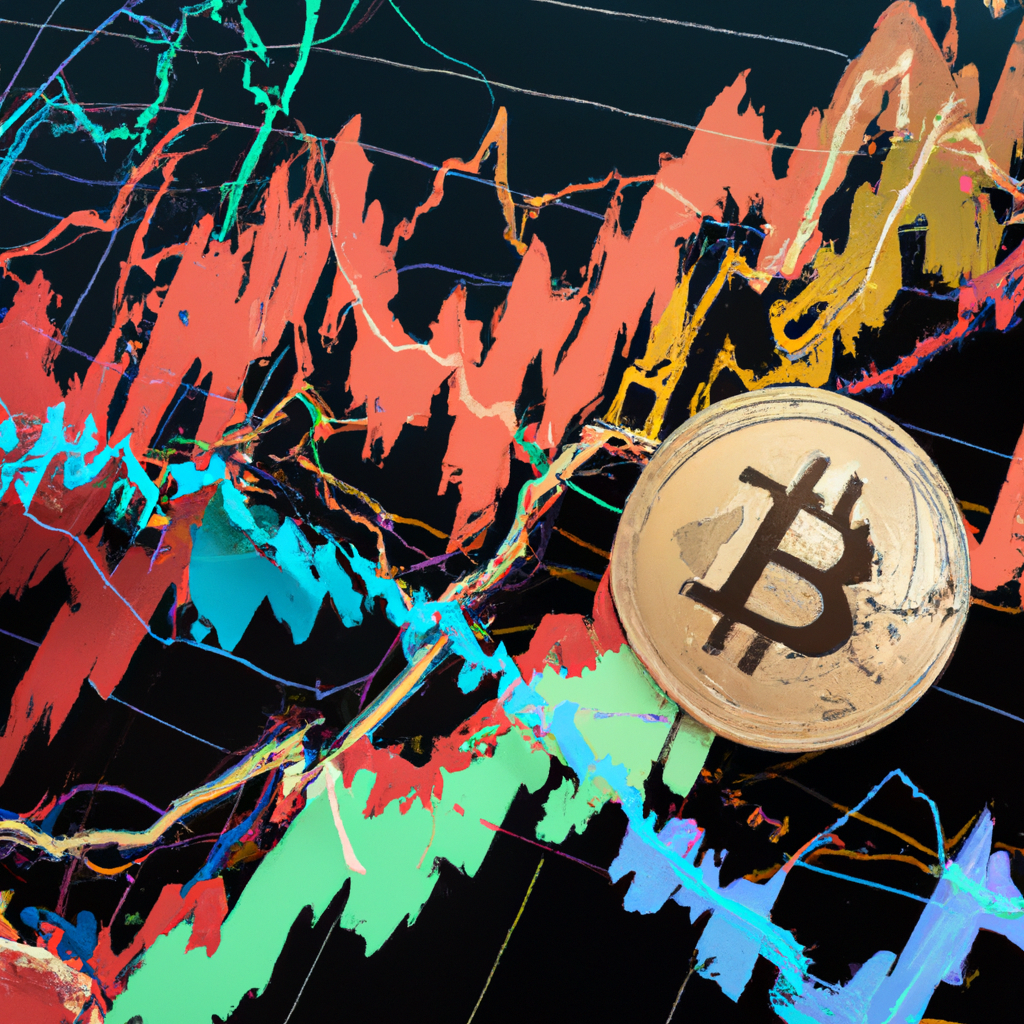Tokenized US Treasury Bonds Reach $1 Billion Milestone on Public Blockchains
March 31, 2024 | by stockcoin.net

Tokenized US Treasury bonds have recently achieved a significant milestone, surpassing a value of $1 billion on public blockchains. This development, as reported by Finance Bitcoin News, signifies a growing interest in digitized assets within the financial industry. The tokenization of US Treasury bonds offers investors a seamless and efficient way to access traditional financial instruments through blockchain technology, potentially revolutionizing the way bonds are traded and managed in the future. This article explores the implications of this milestone and the potential benefits it may bring to the broader financial market.
Introduction
Tokenization is becoming increasingly important in the financial industry, as it offers various benefits such as increased accessibility, reduced transaction costs, and greater liquidity. With the growth of tokenized assets on public blockchains, the tokenization of US Treasury Bonds has gained significant attention. This article will explore the concept of tokenization, discuss the tokenization of US Treasury Bonds, analyze the recent milestone of reaching $1 billion in tokenized bonds, examine the advantages and risks associated with tokenized bonds, and discuss the future outlook for tokenization in the financial industry.
Tokenization of US Treasury Bonds
Definition of tokenization
Tokenization refers to the process of converting traditional assets, such as real estate, equities, or bonds, into digital tokens on a blockchain. These tokens represent ownership or rights to the underlying assets and can be bought, sold, or traded with ease.
Tokenized US Treasury Bonds
In recent years, there has been a growing trend of tokenizing US Treasury Bonds. These bonds are issued by the United States Department of the Treasury and are considered one of the safest investments in the world. By tokenizing these bonds, investors can gain exposure to the traditional bond market with the added benefits of blockchain technology.
Benefits of tokenization for US Treasury Bonds
Tokenization offers several advantages for US Treasury Bonds. Firstly, it increases accessibility for investors, as tokens can be divided into smaller units, allowing for fractional ownership. This enables individuals with limited capital to invest in Treasury Bonds. Additionally, tokenization reduces transaction costs associated with traditional bond markets, such as brokerage fees, settlement fees, and custody costs. It also enhances liquidity by enabling 24/7 trading of tokens, unlike traditional bond markets that have limited trading hours. Moreover, tokenization provides enhanced transparency as all transactions are recorded on the blockchain, making it easier to track ownership and transactions. Lastly, it streamlines settlement processes by automating the clearing and settlement of tokenized bonds, reducing the need for intermediaries and manual processes.
Reaching the $1 Billion Milestone
Significance of the $1 billion milestone
The recent milestone of reaching $1 billion in tokenized US Treasury Bonds is a significant achievement for the tokenization industry. It demonstrates the growing interest and adoption of tokenized assets, particularly in the bond market. This milestone indicates a shift towards embracing blockchain technology in the financial industry and highlights the potential for further growth in the tokenization of US Treasury Bonds and other traditional assets.
Analysis of the growth trajectory
The journey to reaching the $1 billion milestone has been impressive. The tokenization of US Treasury Bonds started gaining traction a few years ago, and since then, the market has experienced exponential growth. The increasing number of platforms and exchanges offering tokenized bonds, along with the rising demand from investors, has contributed to this rapid growth trajectory.
Factors contributing to the milestone
Several factors have contributed to the milestone of $1 billion in tokenized US Treasury Bonds. Firstly, the advantages offered by tokenization, such as increased accessibility and liquidity, have attracted investors looking for alternative investment options. Moreover, the transparency and efficiency provided by blockchain technology have garnered trust and confidence from investors, further driving the adoption of tokenized bonds. Additionally, the endorsement and support from regulatory bodies have played a crucial role in promoting the growth of tokenized bonds.
Advantages of Tokenized US Treasury Bonds
Increased accessibility for investors
Tokenization of US Treasury Bonds allows for fractional ownership, enabling investors with limited capital to participate in the bond market. This opens up investment opportunities to a broader range of individuals who may have previously been excluded from traditional bond markets.
Reduced transaction costs
Tokenization reduces transaction costs associated with traditional bond markets. By eliminating intermediaries and streamlining processes, investors can benefit from lower brokerage fees, settlement fees, and custodial costs. These cost savings enhance the returns for investors and make investing in US Treasury Bonds more economically viable.
Greater liquidity
Tokenization of US Treasury Bonds enhances liquidity by allowing for 24/7 trading. Unlike traditional bond markets that have limited trading hours, tokenized bonds can be bought, sold, or traded at any time. This increased liquidity provides investors with more flexibility and the ability to react quickly to market changes.
Enhanced transparency
Blockchain technology provides enhanced transparency for tokenized US Treasury Bonds. All transactions are recorded on the blockchain, making it easy to track ownership and transactions. This transparency reduces the risk of fraud and provides investors with a clear view of the market, ensuring a greater level of trust and confidence.
Efficient settlement processes
By leveraging blockchain technology, tokenized US Treasury Bonds streamline the clearing and settlement processes. Smart contracts on the blockchain automate these processes, reducing the need for intermediaries and manual intervention. This automation increases the speed and efficiency of settlements, reducing the risk of errors and delays.
Regulatory Framework
Current regulations for tokenized assets
The regulatory framework for tokenized assets is still in its early stages of development. Different jurisdictions have varying approaches to regulating tokenized assets, and the lack of uniformity poses challenges for the tokenization industry. Regulatory authorities are working towards creating a balanced framework that protects investors while fostering innovation and growth in the tokenization space.
Considerations for US Treasury Bonds
Tokenization of US Treasury Bonds requires compliance with existing securities regulations. As bonds are considered financial instruments, issuers and platforms involved in tokenization must adhere to regulatory requirements related to issuance, trading, custody, and investor protection. Collaboration between industry participants and regulatory authorities is essential to establish clear guidelines and ensure the integrity and stability of the tokenized bond market.
Potential regulatory challenges
The tokenization of US Treasury Bonds may face potential regulatory challenges. Regulators may have concerns regarding investor protection, market manipulation, money laundering, and the impact on traditional financial systems. Addressing these concerns and striking the right balance between innovation and regulation will be key to the successful integration of tokenized bonds into the financial industry.
Impact on Traditional Financial Systems
Disruption to traditional bond markets
The tokenization of US Treasury Bonds has the potential to disrupt traditional bond markets. By eliminating intermediaries, reducing costs, and enhancing liquidity, tokenized bonds offer advantages that traditional markets may struggle to match. This disruption could lead to a shift in market dynamics and require traditional bond market participants to adapt their business models.
Integration with traditional financial institutions
To fully realize the benefits of tokenized US Treasury Bonds, integration with traditional financial institutions is crucial. Collaborations between tokenization platforms and banks, custodians, and other financial service providers can facilitate the adoption of tokenized bonds by traditional investors. These partnerships can help bridge the gap between the traditional and tokenized financial systems, ensuring a smooth transition and maximizing the benefits for all stakeholders.
Implications for central banks
The tokenization of US Treasury Bonds may have implications for central banks. As tokenized bonds gain traction, central banks may need to adapt their monetary policy frameworks to incorporate these new financial instruments. Additionally, central banks may need to assess the impact of tokenization on financial stability, market functioning, and the transmission of monetary policy.
Risks and Challenges
Market volatility
Tokenized US Treasury Bonds, like any other asset, are subject to market volatility. Fluctuations in interest rates, economic conditions, and investor sentiment can impact the value of tokenized bonds. Investors should be aware of the potential risks and uncertainties associated with investing in tokenized assets and manage their portfolios accordingly.
Security concerns
Security is a major concern in the tokenization space. As tokenized US Treasury Bonds exist in a digital format, they are susceptible to hacking, cyber attacks, and fraud. Robust security measures, such as encryption, multi-factor authentication, and secure custody solutions, need to be implemented to safeguard investors’ assets and data.
Potential for fraud and illegal activities
The anonymity and pseudonymity offered by blockchain technology can be exploited for illegal activities, such as money laundering, terrorist financing, or tax evasion. Regulatory measures, including know-your-customer (KYC) and anti-money laundering (AML) procedures, must be implemented to mitigate the risk of fraud and ensure compliance with regulatory requirements.
Regulatory compliance
Complying with existing securities regulations, as well as evolving regulatory frameworks, can be challenging for issuers and platforms involved in tokenizing US Treasury Bonds. Navigating the complex regulatory landscape requires a deep understanding of the legal and compliance requirements, and failure to comply can result in penalties and legal consequences.
Lack of investor awareness
Tokenized US Treasury Bonds are still a relatively new concept, and many investors may not be familiar with the benefits, risks, and processes involved. Educating investors about the advantages, risks, and regulatory considerations of tokenized bonds is crucial for fostering investor confidence and promoting wider adoption.
Future Outlook
Projected growth of tokenized US Treasury Bonds
The milestone of reaching $1 billion in tokenized US Treasury Bonds is just the beginning. The market for tokenized bonds is expected to continue growing at a rapid pace. As more investors recognize the advantages of tokenization, and regulatory frameworks mature, the market size is projected to increase significantly in the coming years.
Potential for tokenization of other government bonds
The success of tokenized US Treasury Bonds paves the way for the tokenization of other government bonds. Countries around the world could explore the benefits of tokenization for their sovereign debt, offering investors a wider range of investment options and creating more efficient bond markets.
Adoption by institutional investors
As the tokenization market matures and regulatory clarity improves, institutional investors are likely to enter the space. Institutional investors, such as pension funds, insurance companies, and asset managers, could recognize the benefits of tokenized US Treasury Bonds in terms of diversification, liquidity, and efficiency.
Technological advancements shaping the future
Advancements in blockchain technology, such as scalability solutions, interoperability protocols, and smart contract advancements, will shape the future of tokenized US Treasury Bonds. These technological developments will enhance the efficiency, security, and functionality of tokenization platforms, further accelerating the adoption of tokenized assets.
Case Studies and Success Stories
Examples of successful tokenization projects
Several successful tokenization projects have emerged in recent years, showcasing the potential of tokenized US Treasury Bonds. These projects have demonstrated the benefits of tokenization, including increased accessibility, reduced costs, and enhanced transparency. Case studies of these successful projects provide valuable insights into the practical implementation and adoption of tokenized bonds.
Investor experiences and testimonials
Investors who have participated in tokenized US Treasury Bonds can provide valuable insights through their experiences and testimonials. Understanding investor perspectives on the benefits, risks, and overall satisfaction with tokenized bonds can help build investor confidence and provide real-world examples of the advantages of these innovative financial instruments.
Conclusion
The tokenization of US Treasury Bonds has reached a significant milestone, with $1 billion in tokenized bonds now circulating on public blockchains. This achievement highlights the importance of tokenization in the financial industry and demonstrates the growing interest and adoption of tokenized assets. Tokenized US Treasury Bonds offer numerous advantages, including increased accessibility, reduced transaction costs, greater liquidity, enhanced transparency, and efficient settlement processes. Despite the regulatory challenges and risks associated with tokenization, the future outlook for tokenized US Treasury Bonds is highly promising. With projected growth, the potential for tokenization of other government bonds, adoption by institutional investors, and technological advancements, tokenization is set to revolutionize the financial industry, offering new opportunities for investors and reshaping traditional financial systems.

RELATED POSTS
View all





